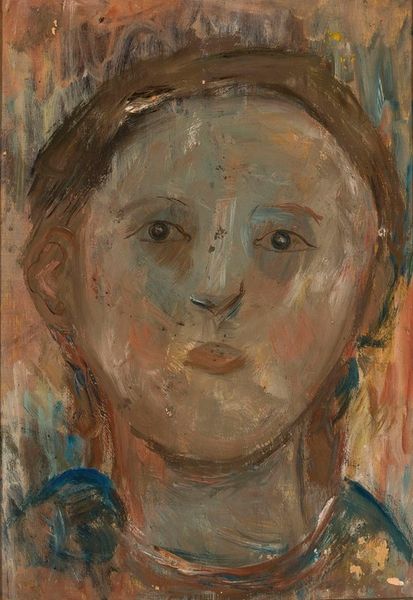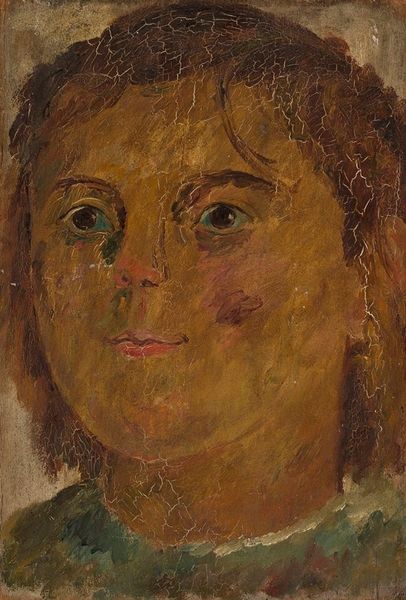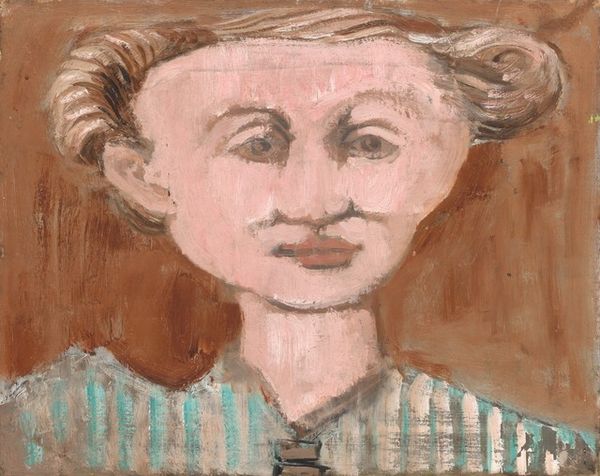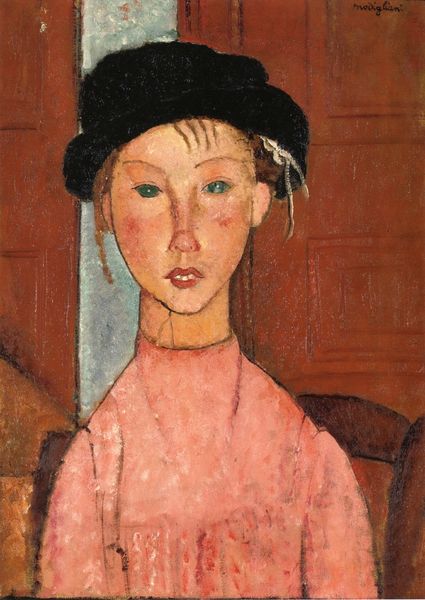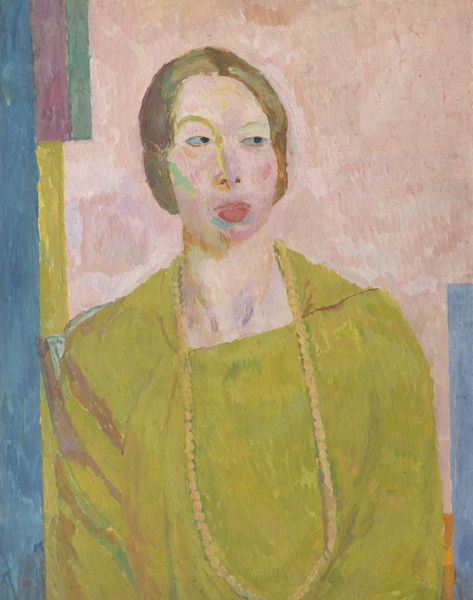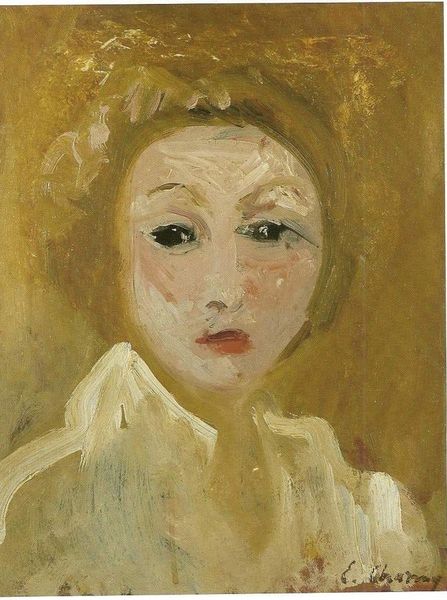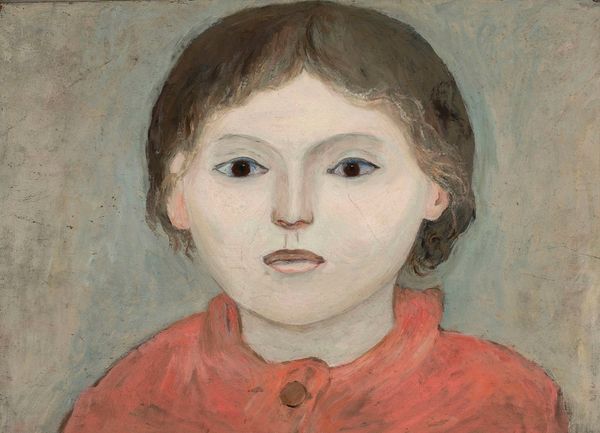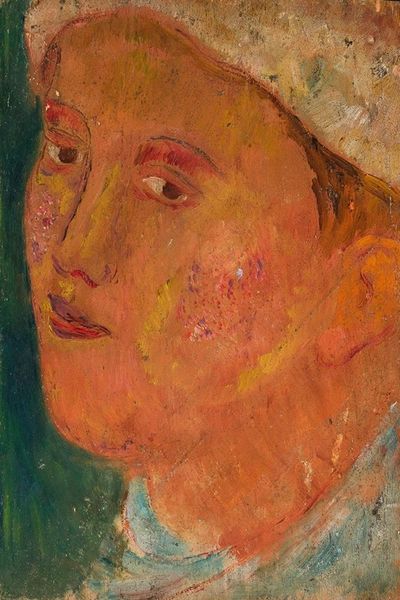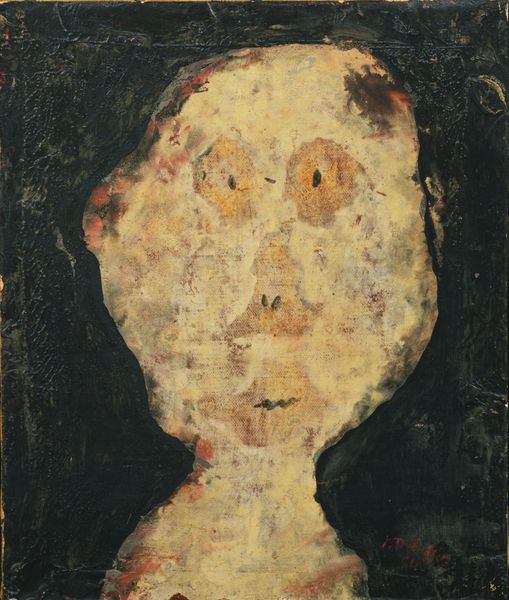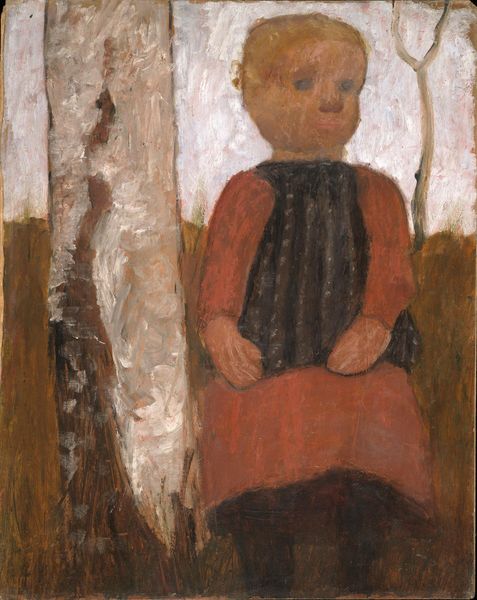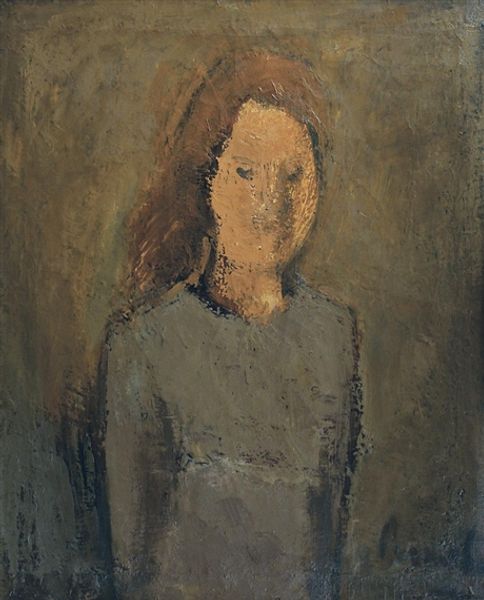
Copyright: Public Domain: Artvee
Curator: Ah, yes, "Girl with a Garland of Flowers" painted by Tadeusz Makowski in 1922. It's such a curious piece. Editor: My initial reaction is… slightly haunting, actually. The starkness of the girl's gaze coupled with the faded garland creates this strange dichotomy. It's tender and a little unsettling all at once. Curator: I think the unsettling feeling stems from the formal structure itself. Notice the planar approach to the figure. There's very little attempt at realistic modeling or depth. Everything feels flattened and simplified. It's almost… childlike, in a way. Editor: Precisely. But also consciously styled, perhaps? Like a theatrical affectation of innocence. The art-nouveau flourish of the garland is an intriguing contrast to the otherwise muted palette. What about that tension? Curator: I'd say it pulls us into Makowski's particular brand of figurative art. His aesthetic sensitivities almost seem at odds, the avant-garde battling a pull towards tradition. I think the red trim of the girl’s smock echoes that struggle as well. That confident splash of primary color makes me wonder if that burst of brightness and the pale roses create something of an iconographic reference. The flowers, symbols of fragility, are almost a melancholic prophecy. Editor: It could be, or simply a moment in childhood, rendered with a knowing adult eye, but still... What strikes me most is this odd emotional aloofness of the girl herself. The painting refuses simple interpretation, doesn't it? The piece is less about the subject and more about the feelings it provokes. Curator: Indeed. Its refusal to conform is what keeps me engaged after all these years. I feel as though it changes, just a little, each time I visit it. Editor: And it certainly demands that we change too—look a bit deeper into what we see, or think we see. And that can only be a good thing, yes?
Comments
No comments
Be the first to comment and join the conversation on the ultimate creative platform.
